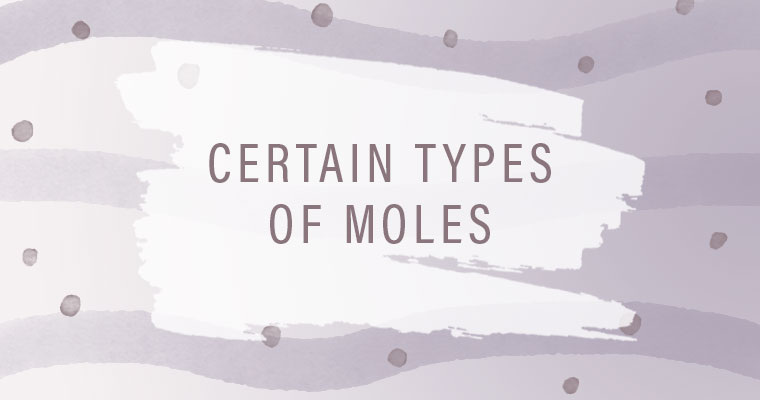If you have acne, opting to seek professional help can be a tough judgement call. After all, there are countless brilliant resources online (ahem) where you can get the lowdown on powerful DIY or topical treatments.
But what about when your questions go beyond the typical "Will these breakouts ever go away?" When you find a mole in an unexpected color—or a tiny, mysterious bump ("What is that?")—it may be time to see an MD.
"There are three main types of skin cancer: basal cell carcinoma, squamous cell carcinoma, and malignant melanoma," says Arielle Kauvar, MD, a New York City-based dermatologist and founding director of New York Laser and Skin Care. "Each type has different appearances, but they have early warning signs you can watch out for."
"Each type has different appearances, but they have early warning signs you can watch out for."
Of course, you may not be checking every square inch of your body on a daily basis (which is fine)—but Dr. Kauvar says the American Academy of Dermatology recommends that you do self-exams at least once a month. "This is especially so if you have a lot of moles or freckles, or if you have a family history of skin issues," she says.
The majority of the time, these conditions stem from sun exposure. "Over 95 percent of basal and squamous cell melanoma are caused by the sun," she says. "Melanoma, on the other hand, has a 20 percent risk for areas that don't ever see the sun—it can be inherited."
Dr. Kauvar notes that it can be tricky deciphering between temporary spots, freckles, and moles on your own. "Whenever you're not sure, you should see a derm—we don't expect individuals to diagnose themselves," she adds. Phew!
Keep reading for Dr. Kauvar's pro tips on what deserves a second look from a dermatologist.

See a derm if: there's a spot that's growing
When you've noticed a mark on your body has very slowly been getting larger in size, you should get it checked, Dr. Kauvar says.

{{post.sponsorText}}
"A skin growth that keeps getting bigger could potentially be the sign of basal or squamous cell carcinoma," she explains. "It can be almost any color—pearly, tan, brown, black, or multicolored."
And it goes without saying that you should keep tabs on anything you think is expanding.

See a derm if: you have certain types of moles
You know them as your beauty marks, but sometimes they carry not-so-pretty risks. "Suspicious moles have some warning signs that could be early stages of melanoma," explains Dr. Kauvar. They're easy to remember because they're tied to the ABCs: asymmetry (not a perfect oval or circle), border (uneven edge), color (not uniform and includes different pigments), diameter (more than 6 millimeters), and evolving (if it's changing in any way).
"That being said, you can have a really small 2 millimeter-wide black spot that could be melanoma, so it's not foolproof," she adds. "To be on the safe side, if you have lots of moles—I'm talking hundreds—you should see a dermatologist regularly."
There are also rare instances in which you have a non-pigmented melanoma spot that's pink, according to Dr. Kauvar. You can even get red moles on your skin, or even have hair growing out of moles. "But 99 percent of melanomas have pigment and are just bizarre-looking moles."

See a derm if: you have odd bumps or scabs
You know how sometimes you'll find a scab out of nowhere, unsure of how it got there? Most of the time it's just what it seems to be, and heals normally. But in rare instances it could be something more serious. "If a scaly, scabbing little spot isn't going away, it could be a sign of basal or squamous cell carcinoma," says Dr. Kauvar. "It could also be bleeding, peeling, or itchy."
She notes that they're not always so in-your-face. "Sometimes a basal cell looks like an almost translucent, pearly little bump that could be sitting there for quite some time." If it hasn't gone away in six to eight weeks, she recommends that you get it checked.
In the meantime, keep your sunscreen on hand (and if all of this is stressing you out, maybe give yourself a little extra TLC—or hey, you can always get a therapist for your skin).
To get to know your complexion better, here's your definitive guide to figuring out your ideal regimen. Plus, this is what every woman should know about her cleansing-and-moisturizing routine.
Loading More Posts...